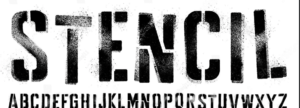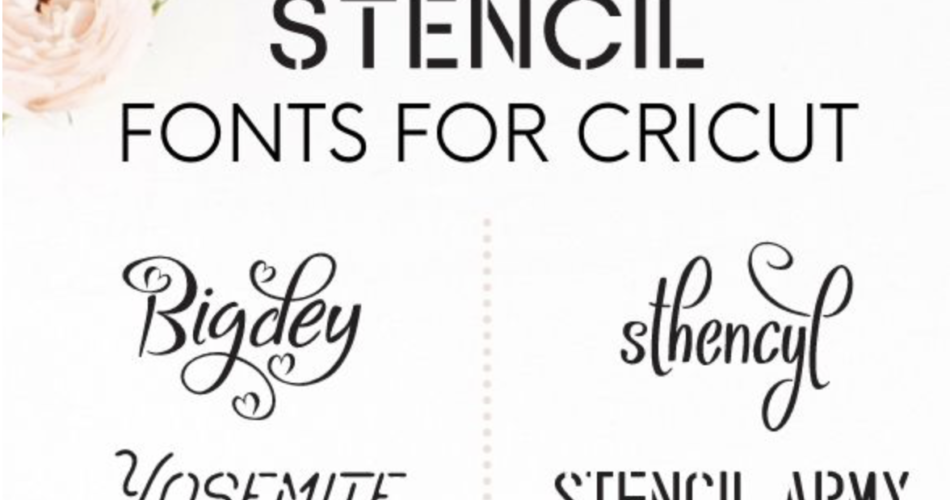In the world of typography, where styles and trends come and go, there are a few timeless classics that continue to captivate and intrigue. One such style is the stencil font. Characterized by its bold, structured lines and cutout-like appearance, stencil fonts have a unique ability to convey a sense of industrial ruggedness and artistic sophistication simultaneously. In this article, we’ll delve into the history, characteristics, and contemporary use of stencil fonts, exploring why they remain an enduring choice for designers and artists across various mediums.
A Brief History

Stencil Fonts
The origins of stencil fonts can be traced back to practicality rather than aesthetics. Stencils were initially used as a utilitarian tool for applying repeated patterns, letters, or designs onto various surfaces. This method allowed for consistent reproduction in fields like shipping, military, and industry. By the mid-20th century, however, artists and designers recognized the visual appeal of this method and began to embrace stencil aesthetics in their works.
Key Characteristics
- Distinctive Breaks: Stencil fonts are characterized by breaks in the letterforms where bridges or connections would traditionally be. These gaps not only define the shape of each letter but also contribute to the unique visual rhythm of stencil typography.
- Bold and Impactful: Stencil fonts often have a bold, commanding presence due to their chunky lines and defined edges. This boldness makes them ideal for headlines, logos, and designs that need to grab attention.
- Contrast and Balance: Despite their rugged appearance, stencil fonts tend to achieve a delicate balance between the thick strokes and the voids within the letters. This contrast adds a touch of elegance to an otherwise industrial style.
- Variety in Design: Stencil fonts come in various designs, ranging from military-inspired stencils with strict geometric forms to more artistic and elaborate designs that experiment with curves and negative space.
Modern Applications
In contemporary design, stencil fonts continue to thrive across a multitude of applications:
- Graphic Design: Stencil fonts find their place in branding, posters, and advertisements. Their strong visual impact helps convey messages with clarity and memorability.
- Street Art: The edgy and urban quality of stencil fonts makes them a popular choice for street artists. The method of using stencils also allows for quick reproduction on different surfaces.
- Digital Design: Stencil fonts have made their way into the digital realm, enhancing websites, app interfaces, and social media graphics. Their ability to merge a sense of history with modern design sensibilities is particularly appealing.
- Fashion: Stencil fonts have even left their mark on the fashion industry. From clothing prints to accessories, their bold and stylish appearance adds an avant-garde touch.
Choosing and Using Stencil Fonts
When working with stencil fonts, consider the context and purpose of your design:
- Legibility: While stencil fonts can be visually captivating, ensure that the chosen font remains legible in the intended application. Some stencil designs can compromise readability.
- Contrast: Stencil fonts derive their appeal from the contrast between solid and void. Make sure this contrast is maintained even when scaled or used in different colors.
- Pairing: Stencil fonts often work well when paired with more traditional typefaces. This combination balances the visual impact of the stencil font with the readability of the companion font.
Conclusion
The enduring charm of stencil fonts lies in their ability to blend the utilitarian with the artistic. From their humble beginnings as functional tools to their current status as design elements that evoke both strength and elegance, stencil fonts have proven their versatility and timeless appeal. Whether in print or digital media, the bold and striking nature of stencil fonts continues to capture our attention and convey messages with an impact that is hard to ignore.

